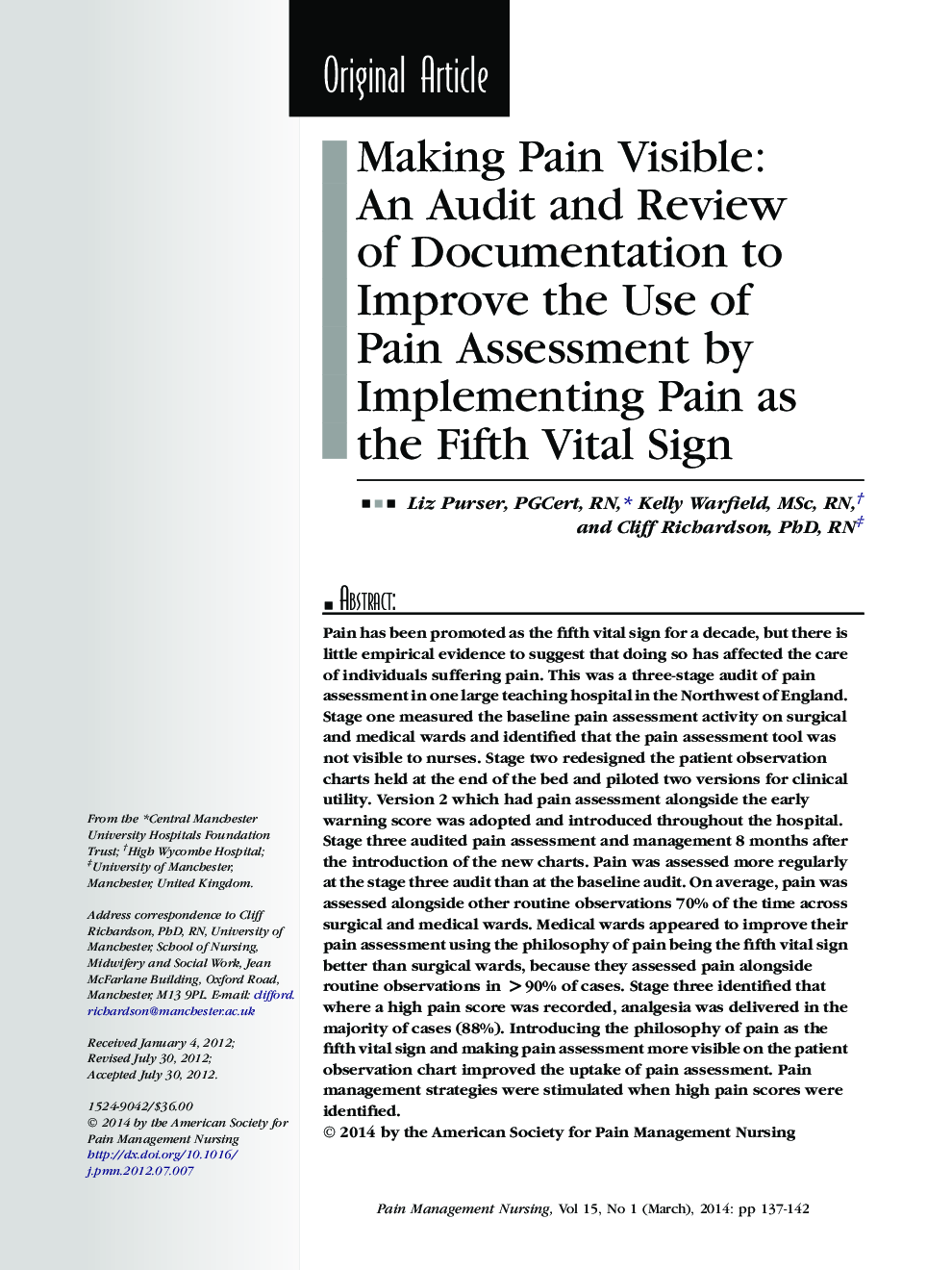| Article ID | Journal | Published Year | Pages | File Type |
|---|---|---|---|---|
| 2673689 | Pain Management Nursing | 2014 | 6 Pages |
Pain has been promoted as the fifth vital sign for a decade, but there is little empirical evidence to suggest that doing so has affected the care of individuals suffering pain. This was a three-stage audit of pain assessment in one large teaching hospital in the Northwest of England. Stage one measured the baseline pain assessment activity on surgical and medical wards and identified that the pain assessment tool was not visible to nurses. Stage two redesigned the patient observation charts held at the end of the bed and piloted two versions for clinical utility. Version 2 which had pain assessment alongside the early warning score was adopted and introduced throughout the hospital. Stage three audited pain assessment and management 8 months after the introduction of the new charts. Pain was assessed more regularly at the stage three audit than at the baseline audit. On average, pain was assessed alongside other routine observations 70% of the time across surgical and medical wards. Medical wards appeared to improve their pain assessment using the philosophy of pain being the fifth vital sign better than surgical wards, because they assessed pain alongside routine observations in >90% of cases. Stage three identified that where a high pain score was recorded, analgesia was delivered in the majority of cases (88%). Introducing the philosophy of pain as the fifth vital sign and making pain assessment more visible on the patient observation chart improved the uptake of pain assessment. Pain management strategies were stimulated when high pain scores were identified.
